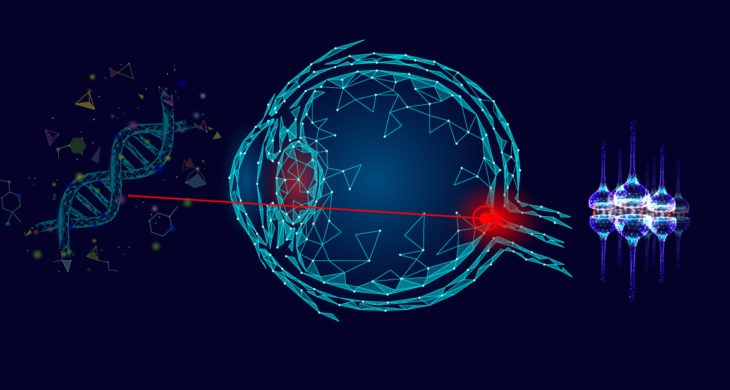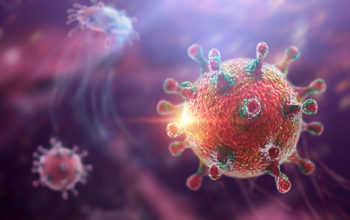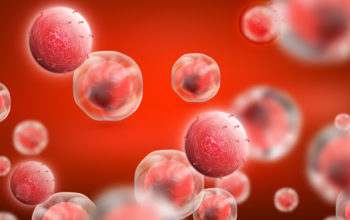
Date: 10th November 2020
Adult central nervous system (CNS) neurons lose their regenerative ability with maturation and therefore, injuries or diseases affecting these neurons cause permanent and irreversible damage. The optic nerve is formed from the axons of the retinal ganglion cells (nerve cells in the retina), and in some diseases such as glaucoma the optic nerve is progressively damaged. Now, scientists have used gene therapy to deliver an adapter molecule, Protrudin, into the eye which stimulated axon regeneration of the damaged nerve fibres, and protected them from cell death after injury, offering hope of a new treatment for glaucoma.
Over 60 million people worldwide are suffering from glaucoma, and whilst we are currently not sure what causes the disease, it is often associated with high intraocular pressure, which causes damage to the optic nerve. It is now the leading cause of irreversible blindness and to date there are no cures available. However, technologies that could protect and encourage axon regeneration could reverse the damage seen by glaucoma and such therapies are highly sought after.
Protrudin is an integral endoplasmic reticulum (ER) membrane protein and could be a good candidate for enabling axon regeneration as it has previously been shown to promote neurite outgrowth in neuronal cells and it is a scaffolding molecule which possesses interaction sites for key axon growth-related molecules and structures.
The team of scientists led by Richard Eva and James Fawcett from the University of Cambridge, UK, therefore, used gene therapy to deliver Protrudin to the eye, which enabled robust central nervous system regeneration both in vitro in primary cortical neurons and in vivo in the injured, adult mouse optic nerve.
The team started by investigating levels of Protrudin and found they were normally expressed at low levels in non-regenerative neurons, and were expressed at higher levels in regenerating neurons. However, by overexpressing Protrudin in cell lines the team were able to induce a higher percentage of protrusion formations – an axon is a protrusion from the neuron body- which were longer than in the control cells.
Whilst this showed that Protrudin was associated with enhanced neurite outgrowth, could it induce axon growth? To test this the team overexpressed the gene in primary cortical neurons, where they saw an increase in the early phase of axon growth.
However, the team wanted to know whether Protrudin could also induce axon growth in mature non-regenerating neurons and whether it could induce regeneration of axon growth upon injury – an important milestone for a prospective glaucoma therapy.
To address this they once again overexpressed Protrudin – this time in cortical neurons – and then caused injury using a laser. They found that enhanced expression of Protrudin in the injured neurons led to a dramatic increase in the percentage of regenerated axons, furthermore axon regeneration initiated earlier and axons were longer when compared to the controls.
Protrudin gene therapy
Whilst these results were promising, the real test would be whether Protrudin could induce similar regeneration in vivo. To answer this, the team packaged the gene into an adenovirus vector (AVV) and delivered the therapy via intravitreal injection in mice. Two weeks post therapy an optic nerve crush was performed and then a fortnight later an axon tracer was administered. The team found that retinal ganglion cell (RGC) survival nearly doubled in the treated eyes compared to the controls, and that a robust optic nerve axon regeneration was observed. Furthermore, the numbers of regenerating axons were also significantly higher, 630 axons compared to only 44 in the controls.
The data indicated that Protrudin could induce regeneration after injury, and that the therapy showed some neuroprotective qualities. But to explore this quality in more depth the team used an acute retinal explant model which is often used to detect potential neuroprotective treatments for glaucoma.
Once again mice were treated with the therapy and then the retinas were removed two weeks later and cultured as explants for three days. In the controls, the retinas lost 55% of their RGCs but amazingly, the Protrudin-treated retinas were completely neuroprotected and showed no loss of RGCs.
Conclusions and future applications
The team here have shown that Protrudin enabled robust axon regeneration and neuroprotection in the retina and optic nerve and promoted regeneration after damage of cortical neurons in vitro. As AAV therapies have already been approved for human use, this potential therapy for glaucoma could translate readily to the clinic.
The neuroprotective quality of Protrudin was unexpectedly high, providing complete protection in the assay described here. This could be a valuable tools for those patients diagnosed early with glaucoma, and could prevent the loss of sight in millions of people.
As with many diseases successful patient outcomes increase with early diagnosis. We recently reported the successful in vivo trial of an injectable pressure sensor to monitor and collect long-term intraocular pressure data for glaucoma. One can easily imagine the benefit of such a device being able to monitor live pressure changes within the eye, coupled with the implementation of Protrudin-gene therapy at the ideal time point, being able to vastly increase patient health.
This work should add to the growing, diverse and exciting new set of tools aimed at fighting vision loss. Scientists recently used gene therapy to deliver a highly photosensitive protein into retina bipolar cells bypassing degenerative photoreceptors and restoring vision in blind mice. However, for this example the optic nerve remained functional. Now, here with this work we can potential regenerate the optic nerve with Protrudin-gene therapy, which could open the avenues for treating such diseases and injuries that affect that part of the eye. Other work with in vivo gene editing to treat a rare eye condition Leber congenital amaurosis has already reached the clinic, and was recently approved by the US Food and Drug Administration.
However, it is worth bearing in mind that gene therapy is not the only novel treatment being developed for blindness. In recent months we have seen bionic devices being developed to restore vision, such as the biomimetic bionic eye, ElectroChemical EYE – dubbed EC-EYE- and the bionic cortical device, Gennaris. Gennaris, bypasses the optic nerve thereby offering an alternative solution for those patients with limited optic nerve function, whilst EC-EYE would have to be wired into the optic nerve.
With many steps involved in the visual transduction cascade, the ability to target and restore or bypass each step will be a valuable tool for treating a wide-range of eye diseases. The strength here of a Protrudin-based therapy is in its simplicity and non-invasive nature. Crucially together these technologies will offer valuable alternatives in the future, and powerful tools for improving patient sight and hopefully giving us the ability to protect and reverse blindness.
For more information please see the press release from the University of Cambridge
Petrova, V., C. S. Pearson, J. Ching, J. R. Tribble, A. G. Solano, Y. Yang, F. M. Love, R. J. Watt, A. Osborne, E. Reid, P. A. Williams, K. R. Martin, H. M. Geller, R. Eva and J. W. Fawcett (2020). “Protrudin functions from the endoplasmic reticulum to support axon regeneration in the adult CNS.” Nature Communications 11(1): 5614.
https://doi.org/10.1038/s41467-020-19436-y


